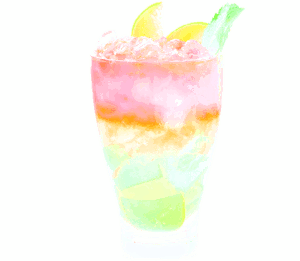search
date/time
 | Lancashire Times A Voice of the Free Press |

The Aperitif Guy
Features Writer
@AperitifGuy
9:34 AM 11th March 2020
lifestyle
A Brief History Of Gin

By the early 18th century, gin was said to be cheaper than beer, making it the drink of choice for those with no access to clean water. Many unscrupulous dealers diluted the spirit with such things as turpentine and sulphuric acid to the spirit, and it’s hardly surprising that gin came to be associated with madness, destitution and early death. The government tried to address this by restricting the right to make gin, introducing the distiller’s licence that we still know today.
Until the 1830s, gins were sweeter than we think of today. Sugar was added to address that age-old problem of rough-tasting spirit. In 1830, though, an Irish excise clerk, Aeneas Coffey, patented modifications to the column still that allowed it to produce a much lighter, purer, smoother spirit. Distillers no longer needed to add sugar, and the London Dry style emerged – bitter, sharp & clear, giving it infinite versatility. Today, ‘London Dry’ denotes a style of gin, not a geographical origin. It’s a clear spirit that has been distilled with roots, berries and seeds to flavour the spirit. By law, a significant proportion of these flavourings must be juniper. Angelica and coriander are the most common other ingredients. No additional sugar is added. ‘Old Tom’ is an older style of gin that is enjoying a bit of a revival as modern drinkers seek out different experiences. It is made with fewer, stronger flavourings and sweetened after distillation.

Juniper berries
Win some Gin!
Win a 70cl Passion Fruit Gin and 2 Copa Glasses: Try this Facebook competition by Northern Gin producer The Artful Pour.
Facebook Competition
During the cocktail boom of the early 20th century, London Dry’s versatility made it the gin of choice for celebrity bar tenders. Its clean taste and dry finish make it ideal for mixing with other flavours. Well-known cocktails like the White Lady, the Martini and the Negroni all belong to this era, and gin found its way into all sorts of combinations, one or two of which might surprise us. Did you know that the original spirit in an Alexander cocktail was gin? It’s quite a startling drink in its original form, nothing like as reassuring as its brandy-based offspring, and worth trying out.Win a 70cl Passion Fruit Gin and 2 Copa Glasses: Try this Facebook competition by Northern Gin producer The Artful Pour.
Facebook Competition

A refreshing Negroni
Also by The Aperitif Guy...
Cooking with KidsRomantic Champagne Cocktails For St Valentine’s DayThe Special Days Of SpringFestive Dinner PartiesGive The Turkey A RestAnd here we see one of the challenges of the current boom. Local sells, but ‘local’ gins are not always made in the town whose name they bear. I know, for instance that York gin is distilled within the city of York. Masons Yorkshire Gin has just returned production to Leyburn after a short exile forced on them by the fire last April. Sing gin is distilled in the village of Kettlesing, in the Yorkshire Dales. Many other producers are rightly proud of their connection to the local area. There are one or two, though, that use a local connection for branding while outsourcing production to large distilleries in Birmingham, Liverpool and London. Is this a problem? If the gin tastes good, does it matter where it was produced? Well, yes and no. If I’m buying it because it tastes good, that’s all that really matters. However, if I’ve been persuaded to buy because of its connection to a particular town or region, then I’m making a choice to support employment in that area and should be able to have confidence that most of the work done around this gin is done in the area named.
Fashion

Consumer regulations require that any product calling itself gin be above 35.5% ABV and taste predominantly of juniper. While the first of those conditions can be objectively verified, the second one is really a matter for the individual’s response. We mustn’t impede creativity and experimentation: they are vitally important in our food & beverage industries. However, there are those who fear gin is in danger of losing its 500-year-old, bitter identity.
I imagine the bubble in the gin market is going to burst fairly soon. I’m confident that once it does, many of the new gins will survive, especially those from smaller distilleries that have cultivated a loyal consumer base. They have captured hearts and palates and deserve to last. London Dry will continue to be the dominant style, but the interest in older styles like Old Tom and Plymouth will last. Some of the flavoured gins (I’d have a punt at the rhubarb, orange and gooseberry ones) will have become so well established that we will forget they were ever new. I can’t see the more exotic and outrageous ones surviving, though. We may well come to remember them with the same slightly embarrassed nostalgia we now have for Cherry B, Taboo or Hooch.
Parts of this article have appeared previously in my blog, where you can read more of my thoughts on food, drinks and fine entertaining: blog.theaperitifguy.co.uk You can also find me on Twitter (@AperitifGuy) or YouTube (http://blog.theaperitifguy.co.uk/).
The Facebook competition to win a 70cl bottle of Passion Fruit Gin and 2 Copa glasses can be found here: https://www.facebook.com/1081302379/posts/10218900671082734